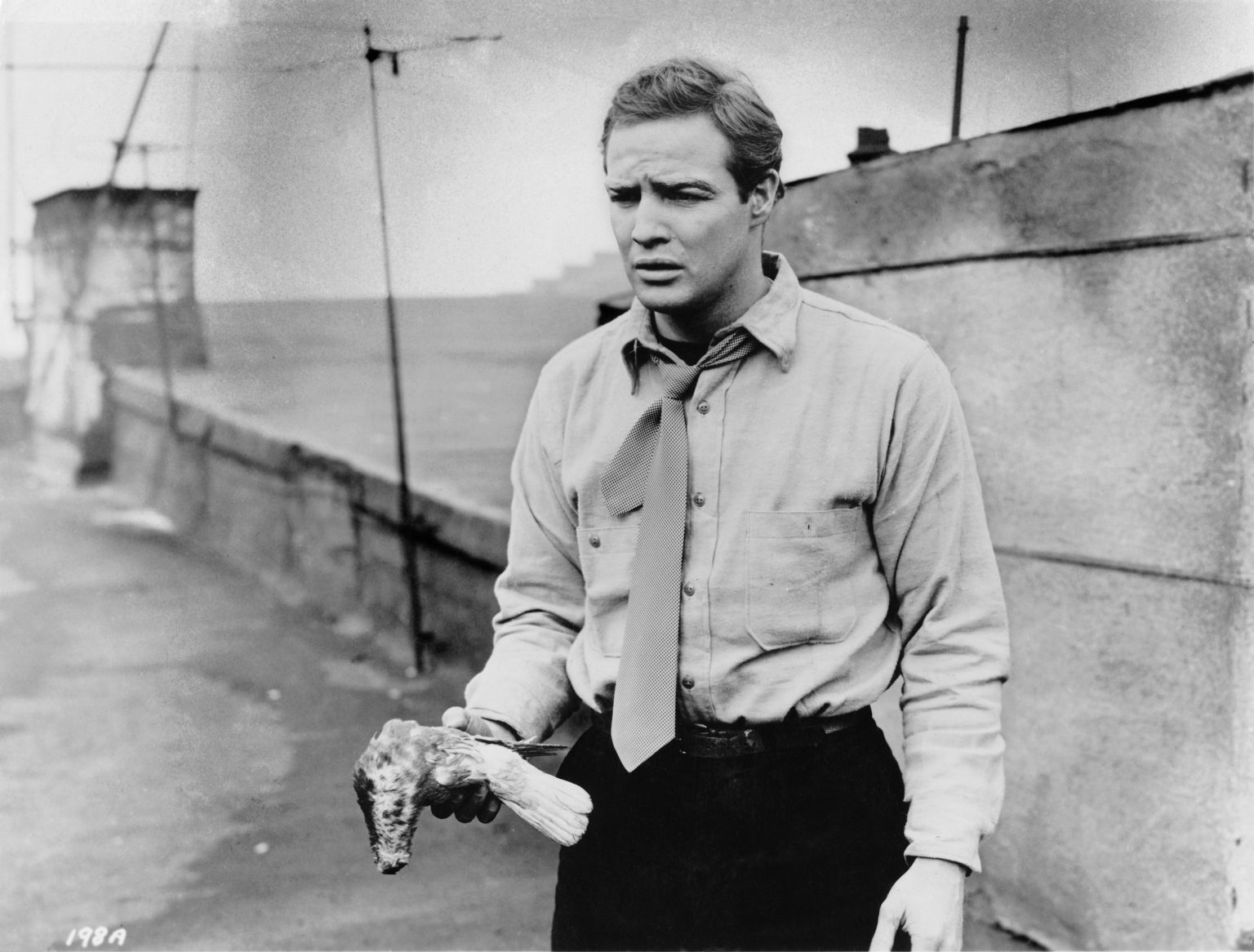Released on July 28, 1954, “On the Waterfront” is a critically acclaimed movie that delves into union corruption. Marlon Brando delivers one of his most memorable performances as Terry Malloy, a former prizefighter turned longshoreman. The film received praise for its acting, directing, and overall storytelling. Directed by Elia Kazan, the movie follows Malloy as he grapples with a moral crisis and faces the decision of remaining loyal to the mob-connected union boss or standing up against corruption as the authorities close in on them. The film went on to win eight Oscars, including best picture, director, actor, supporting actress, and screenplay.
One of the most iconic moments in the movie is when Brando’s character, Terry, reflects on his life and blames his brother for his current circumstances. The emotional depth and grittiness of the film are captured by Kazan’s exceptional direction, particularly in the scene where Terry confronts his brother in a car. The close-up camera angles and the sad music add to the heart-wrenching emotion of the scene. Screenwriter Budd Schulberg based his story and screenplay on Malcolm Johnson’s Pulitzer Prize-winning series of articles, “Crime on the Waterfront,” which exposed longshoremen and union corruption. Schulberg conducted additional research on the New York and New Jersey waterfronts, including attending the New York Waterfront Crime Hearings, which influenced the script’s climax.
The inspiration for “On the Waterfront” came from a series of articles written by Malcolm Johnson that shed light on corruption among longshoremen and unions in New York. Screenwriter Budd Schulberg used this source material to craft a powerful story that resonated with audiences. The emotional depth of the film, coupled with Brando’s brilliant performance, has solidified its place in cinematic history. Directed by Elia Kazan, the movie masterfully captures the moral dilemma faced by Terry Malloy as he navigates loyalty to the mob-connected union boss or doing what is right in the face of corruption. The film’s impact is further heightened by its depiction of the harsh realities facing those in the working-class communities of the waterfront.
“On the Waterfront” is often hailed as a masterpiece of cinema, with its powerful storytelling and impactful performances. The film’s exploration of moral crisis, loyalty, and corruption resonates with audiences to this day. Marlon Brando’s portrayal of Terry Malloy is widely regarded as one of the greatest performances in film history, earning him critical acclaim and further solidifying his legacy as a legendary actor. The movie’s success was further cemented by its eight Oscar wins, including recognition for best picture, director, actor, supporting actress, and screenplay. The themes and messages of “On the Waterfront” continue to be relevant and thought-provoking, making it a timeless classic that has stood the test of time.
The legacy of “On the Waterfront” extends beyond its initial release, as the film has been recognized for its cultural and historical significance. Selected for preservation in the National Film Registry in 1989, the movie continues to be celebrated for its contribution to cinematic history. The impact of the film goes beyond entertainment, as it sheds light on important societal issues such as corruption, loyalty, and individual morality. By drawing inspiration from real-life events and shedding light on the struggles faced by working-class communities, “On the Waterfront” remains a powerful and thought-provoking piece of storytelling that continues to captivate audiences around the world.


